I will start by saying that I am new to reloading and I admit that despite triple checking everything along the way I still managed to fudge up which has reinforced with me how important it is to be very clear on what your doing when your doing it, that being said my mistake should not have resulted in my experience.
For my first reloads I reloaded for .270 wsm, 6.5 creedmoor & .338 win mag. each of which were loaded on different days, so there was no chance of powder mixup between calibers. The .270wsm I loaded 4 different bullets each with two different types of powder using brass that has been used many times, but for which I am unsure of how many times. The brass was annealed, trimmed, deburred and chamfered. The 6.5 creedmoor I loaded one type of bullet with two different powders using brand new brass that was deburred and chamfered. All of these round performed as expected and without concern of any known issue. The .338 was another issue.
I originally loaded 12 rounds with 250gr Berger Classic Hunters, found that the seating depth required to accommodate my magazine was too great, so unloaded them using a Lyman bullet puller hammer and reloaded them using 225gr Hornady SST.
This was my process:
Brass used: once fired (by me) factory Hornady 225gr SST rounds
Primers: Federal large rifle
Powder: IMR 4831
Bullets: 225gr Hornady SST
Rifle: Tikka T3 lite stainless.
I took the once fired factory brass, de-primed it, cleaned it in the tumbler, blew it all out and off with compressed air, annealed it, lubed and resized them using Hornady Dies, cleaned it in the ultrasonic cleaner, dried it in the dehydrator, trimmed it (next time I will do this step before cleaning) deburred it, chamfered it, resized and cleaned the primer pocket (probably didnt need the resizing), primed it, then loaded powder and seated bullets, no crimping.
My big mistake was I had looked at a number of sources for suggested powder, the lyman book, the rcbs book, online, hornadys website etc. I had planned on using IMR 4831, but when I went to do it I went off of hornadys website, My mistake was loading IMR 4831, when Hornadys site suggests H 4831 (Yes, I know that different brands of powder with the same number are not usually interchangeable). Hornadys suggested load was 60.9min - 73.5max, I loaded to 61gr, .1gr over suggested min, but 12.5gr less than max, figured should be good. so I loaded 61gr of IMR 4831. Seated my bullet .0200 off of the lands which gave me a COAL of 3.3300, Hornadys listed Coal was 3.3200.
My first shot at the range felt fine, I neglected to carefully inspect the cartridge, had I done so I would have noticed that the primer had unseated and was now no longer lower than the case head. could have been due to over pressure, could have been due to the likely unnecessary primer pocket resizing. no other signs of pressure were noticed, no case bulging, the case ejected effortlessly etc. My second shot also felt fine but when I ejected the round with my left hand ready to catch the cartridge, the bolt disengaged fine but the shell didnt jump put, I figured it was just sitting on top of the magazine, so I ejected the mag expecting the case to drop, but instead just the separated case head came out. I was instantly freaked out, I raised the gun and the remainder of the shell easily slid out of the chamber with nothing but gravity.
I stopped shooting that gun and finished my evening with the .270 and 6.5
When I got home and started going over things is when I caught the powder mixup. I dont even own H 4831 so there is no way that I put that in there, 100% it was IMR 4831, so right away I thought shoot, that is my problem, however when I looked up Lymans and RCBSs Min loads for IMR 4831 they were 65gr and 67gr respectively, a fair bit higher than the 61gr I loaded so they should be under powered. Did I load the wrong measurement? Nope, was sure I didnt, but just to check I popped a cpl rounds open with the bullet pulling hammer and remeasured, just under 61gr now (Im assuming there was some loss in bullet pulling, emptying, cleaning etc)
So now Im stuck with what to do. Im afraid to shoot those rounds and dont know what to change. could it be the brass? Someone told me you shouldnt shoot factory round brass because its not meant to be reloaded. how can that be? I have and would never do it, but I know lots of ppl that pick up random range brass to reload, most if not off all of which would be factory rounds.
Below I will include photos of the reloaded round on the left, the factory round on the right. the first shot with the un-seated primer and then the second shot with the case head seperation. Any suggestions or thoughts are greatly appreciated. what would you try next? and what would you do with the current loaded rounds?
View attachment 708337
View attachment 708338
View attachment 708339
View attachment 708340
View attachment 708341
View attachment 708343
View attachment 708344
For my first reloads I reloaded for .270 wsm, 6.5 creedmoor & .338 win mag. each of which were loaded on different days, so there was no chance of powder mixup between calibers. The .270wsm I loaded 4 different bullets each with two different types of powder using brass that has been used many times, but for which I am unsure of how many times. The brass was annealed, trimmed, deburred and chamfered. The 6.5 creedmoor I loaded one type of bullet with two different powders using brand new brass that was deburred and chamfered. All of these round performed as expected and without concern of any known issue. The .338 was another issue.
I originally loaded 12 rounds with 250gr Berger Classic Hunters, found that the seating depth required to accommodate my magazine was too great, so unloaded them using a Lyman bullet puller hammer and reloaded them using 225gr Hornady SST.
This was my process:
Brass used: once fired (by me) factory Hornady 225gr SST rounds
Primers: Federal large rifle
Powder: IMR 4831
Bullets: 225gr Hornady SST
Rifle: Tikka T3 lite stainless.
I took the once fired factory brass, de-primed it, cleaned it in the tumbler, blew it all out and off with compressed air, annealed it, lubed and resized them using Hornady Dies, cleaned it in the ultrasonic cleaner, dried it in the dehydrator, trimmed it (next time I will do this step before cleaning) deburred it, chamfered it, resized and cleaned the primer pocket (probably didnt need the resizing), primed it, then loaded powder and seated bullets, no crimping.
My big mistake was I had looked at a number of sources for suggested powder, the lyman book, the rcbs book, online, hornadys website etc. I had planned on using IMR 4831, but when I went to do it I went off of hornadys website, My mistake was loading IMR 4831, when Hornadys site suggests H 4831 (Yes, I know that different brands of powder with the same number are not usually interchangeable). Hornadys suggested load was 60.9min - 73.5max, I loaded to 61gr, .1gr over suggested min, but 12.5gr less than max, figured should be good. so I loaded 61gr of IMR 4831. Seated my bullet .0200 off of the lands which gave me a COAL of 3.3300, Hornadys listed Coal was 3.3200.
My first shot at the range felt fine, I neglected to carefully inspect the cartridge, had I done so I would have noticed that the primer had unseated and was now no longer lower than the case head. could have been due to over pressure, could have been due to the likely unnecessary primer pocket resizing. no other signs of pressure were noticed, no case bulging, the case ejected effortlessly etc. My second shot also felt fine but when I ejected the round with my left hand ready to catch the cartridge, the bolt disengaged fine but the shell didnt jump put, I figured it was just sitting on top of the magazine, so I ejected the mag expecting the case to drop, but instead just the separated case head came out. I was instantly freaked out, I raised the gun and the remainder of the shell easily slid out of the chamber with nothing but gravity.
I stopped shooting that gun and finished my evening with the .270 and 6.5
When I got home and started going over things is when I caught the powder mixup. I dont even own H 4831 so there is no way that I put that in there, 100% it was IMR 4831, so right away I thought shoot, that is my problem, however when I looked up Lymans and RCBSs Min loads for IMR 4831 they were 65gr and 67gr respectively, a fair bit higher than the 61gr I loaded so they should be under powered. Did I load the wrong measurement? Nope, was sure I didnt, but just to check I popped a cpl rounds open with the bullet pulling hammer and remeasured, just under 61gr now (Im assuming there was some loss in bullet pulling, emptying, cleaning etc)
So now Im stuck with what to do. Im afraid to shoot those rounds and dont know what to change. could it be the brass? Someone told me you shouldnt shoot factory round brass because its not meant to be reloaded. how can that be? I have and would never do it, but I know lots of ppl that pick up random range brass to reload, most if not off all of which would be factory rounds.
Below I will include photos of the reloaded round on the left, the factory round on the right. the first shot with the un-seated primer and then the second shot with the case head seperation. Any suggestions or thoughts are greatly appreciated. what would you try next? and what would you do with the current loaded rounds?
View attachment 708337
View attachment 708338
View attachment 708339
View attachment 708340
View attachment 708341
View attachment 708343
View attachment 708344
Attachments
-
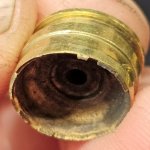 20230917_230031.jpg48.1 KB · Views: 913
20230917_230031.jpg48.1 KB · Views: 913 -
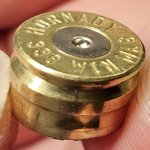 20230917_225948.jpg52.7 KB · Views: 917
20230917_225948.jpg52.7 KB · Views: 917 -
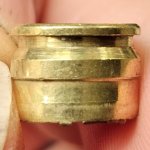 20230917_225938.jpg43.5 KB · Views: 917
20230917_225938.jpg43.5 KB · Views: 917 -
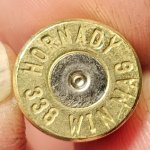 20230917_225931.jpg54.2 KB · Views: 917
20230917_225931.jpg54.2 KB · Views: 917 -
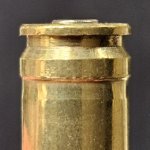 20230917_225806.jpg38.6 KB · Views: 918
20230917_225806.jpg38.6 KB · Views: 918 -
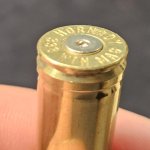 20230917_225753.jpg36.2 KB · Views: 909
20230917_225753.jpg36.2 KB · Views: 909 -
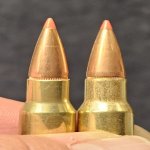 20230917_225644.jpg55.2 KB · Views: 915
20230917_225644.jpg55.2 KB · Views: 915 -
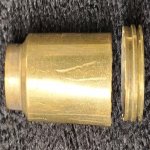 20230917_230122.jpg54.5 KB · Views: 918
20230917_230122.jpg54.5 KB · Views: 918








































































